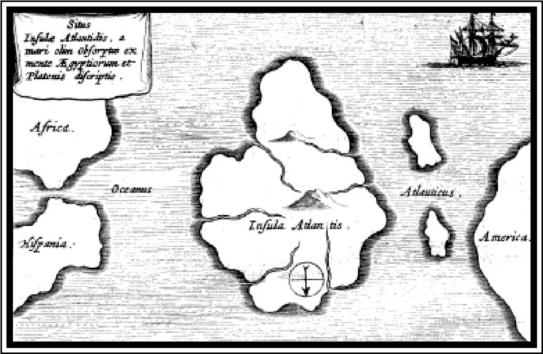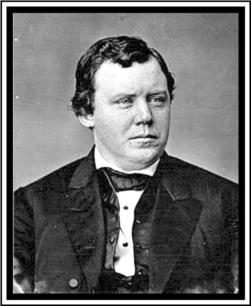Hidden History: Lost Civilizations, Secret Knowledge, and Ancient Mysteries (3 page)
Read Hidden History: Lost Civilizations, Secret Knowledge, and Ancient Mysteries Online
Authors: Brian Haughton
Tags: #Fringe Science, #Gnostic Dementia, #U.S.A., #Alternative History, #Amazon.com, #Retail, #Archaeology, #History

Unfortunately, evidence for a pet
theory is usually obtained by ignoring
conflicting data, or taking an individual artifact, person, or even place
out of its original context. Let's imagine a situation where, for example, you
wanted to prove that Ireland had been
invaded by the Romans, even though
the vast majority of archaeologists and
historians are convinced it never was.
There are a fair amount of Roman finds
in the country, some from sealed archaeological contexts, which you could
use to support your case. But if these
Roman objects are looked at in greater
detail and their original contexts examined, then it becomes apparent that
the artifacts are of the portable variety: pottery, coins, and jewelry. Roman
objects in Ireland are usually found at
religious sites, such as the huge burial
mound at Newgrange, north of Dublin,
which were already thousands of years
old by the Roman period. This would
indicate that, rather than signifying a Roman invasion, the objects were the
result of religious offerings by pilgrims, probably visiting from Britain.
A cursory glance at the artifacts in isolation could never have arrived at this
conclusion.
Of course, one must always be careful to distinguish between genuine and
spurious mysteries, and for this reason a few puzzles of the spurious category have been included in this book.
It is surprising how many apparently
inexplicable mysteries (especially
those relating to unusual objects) prove
on closer examination to have prosaic
explanations. With the proliferation of
Websites dedicated to ancient mysteries, secret societies, and out-of-place
artifacts, stories are fabricated entirely
on the Internet, without any supporting evidence or research, and are reproduced uncritically as fact. One of the
best examples of these "Internet
truths" is the supposedly ancient Coso
Artifact, a short chapter on which is
included in this book. A major problem
with many of the speculations that surround unexplained ancient artifacts is
that the objects are taken out of their
original context in order to provide
evidence for a favorite theory. Just
because the peoples of prehistoric
Britain and ancient Peru carved figures into the landscape doesn't mean
there was any contact between the two
places. What it does signify is a basic
human need to express oneself using
the landscape, of which the people
perhaps believed themselves to be a
part. The lives of many of the cultures
of antiquity were full of magic and
mystery, but to acquire even a partial
understanding of this often entails
cutting oneself off from present-day
preoccupations and desires. If this is
not done, then we are in danger of
clothing the ancient peoples of the
world in modern, ill-fitting garments,
and transforming them into 21st century ancients who would not have been
recognized in their original cultures.
On the other hand, to deny the
mysteries of the past completely, to
believe that modern archaeology and
science have the answers to every ancient enigma, is equally ill-advised. (It
also makes dull reading.) Alternative
theorists, such as Graham Hancock,
Robert Bauval, and Christopher
Knight may sometimes be too uncritical when dealing with the evidence for
lost civilizations and ancient technology, but they are better writers than
most archaeologists. Academics are
never going to convey the fascination
of their subject to the general public if
their commercial publications read
like technical reports, or notes written for a lecture to a group of Ph.D.
students. There are, of course, exceptions: Mike Pitts's Hengeworld,
Francis Pryor's Britain BC, and Barry
Cunliffe's Facing the Ocean: The Atlantic and Its Peoples, 8000 BC to AD 1500,
should be read by everyone with an
interest in ancient history.
In Hidden History, ancient mysteries are divided into three categories:
Mysterious Places, Strange Artifacts,
and Enigmatic People. The choice of
subjects included in the book was a
personal one, made to bring together
the most interesting of ancient mysteries, and to cover a wide range of
cultures, time periods, and types of
mystery. The book has no hidden
agenda; I hope my readers will use the
evidence presented to make up their
own minds about these riddles of our
enigmatic past.

Places
Blank Page


Athanasius Kircher's map of Atlantis's possible location.
From Mundus Subterraneus (1669).
The magical lost land of Atlantis
has captured the imagination of poets,
scholars, archaeologists, geologists,
occultists, and travelers for more than
2,000 years. The notion of a highly
advanced island civilization (that
flourished in remote antiquity only to
be destroyed overnight by a huge
natural catastrophe) has inspired believers in the historical truth of the
Atlantis tale to search practically every corner of the Earth for remnants
of this once great civilization. Most archaeologists are of the opinion that
the Atlantis story is just that, a story,
an allegorical tale with no historical
value whatsoever. And then there
are the occultists, many of whom have
approached the story of Atlantis from
the standpoint that it represents either a lost spiritual homeland (such as
Mu/Lemuria), or a different plain of
existence entirely. What is it about
Atlantis that has inspired such diverse
interpretations? Could there be any
truth behind the story?
The original source from which all
information about Atlantis ultimately
derives is the Greek philosopher
Plato, in his two short dialogues
Timaeus and Critias, written somewhere between 359 and 347 B.C. Plato's
supposed source for the story of
Atlantis was a distant relative of his,
a famous Athenian lawmaker and
Lyric poet named Solon. Solon had, in turn, heard the story while visiting
the court of Amasis, king of ancient
Egypt from 569 to 525 B.C., in the city
of Sais, on the western edge of the Nile
Delta. While at the court of Amasis,
Solon visited the Temple of Neith and
fell into conversation with a priest
who related the story of Atlantis to
him. The priest described a great island, larger than Libya and Asia combined, that had existed 9,000 years
before their time, beyond the Pillars
of Hercules (the Strait of Gibraltar) in
the Atlantic Ocean. Atlantis was rule
over by an alliance of kings descended
from Poseidon, god of the sea and
earthquakes, whose eldest son, Atlas,
gave his name to the island and the
surrounding ocean.
The Atlanteans possessed an empire that stretched from the Atlantic
into the Mediterranean as far as Egypt
in the south and Italy in the north.
During an attempt to extend their
empire further into the Mediterranean, the Atlanteans came up against
the combined powers of Europe, led by
the city-state of Athens. In this remote
time, Athens was already a great city
and a society ruled by a warrior-elite
class who disdained riches and lived a
spartan lifestyle. The armies of
Atlantis were eventually defeated by
the Athenians alone, after their allies
deserted them. However, soon after the
victory there was a devastating earthquake followed by huge floods, and the
continent of Atlantis sank beneath the
Ocean "in a single dreadful day and
night," in the words of Plato.
The destruction of Atlantis and its
location beyond the Strait of Gibraltar
takes up only a few lines in Plato's
Dialogues, in contrast to his much
more detailed description of the
island's physical and political organization. Initially Atlantis had been an
idyllic place, endowed with a wealth
of natural resources; there were forests, fruits, wild animals (including
elephants), and abundant metal ores.
Each king on the island possessed his
own royal city over which he was complete master. However, the capital
city, ruled by the descendents of
Atlas, was by far the most spectacular. This ancient metropolis was surrounded by three concentric rings of
water, separated by strips of land on
which defensive walls were constructed. Each of these walls was encased in different metals, the outer
wall in bronze, the next in tin, and the
inner wall "flashed with the red light
of orichalcum," an unknown metal. The
Atlanteans dug a huge subterranean
channel through the circular moats,
which connected the central palace
with the sea. They also carved a harbor from the rock walls of the outer
moat. The main Temple of Poseidon,
on the central citadel, was three times
larger than the Parthenon in Athens,
and was covered entirely in silver
(with the exception of the pinnacles,
which were coated in gold). Inside the
temple, the roof was covered with
ivory and decorated with gold, silver,
and orichalcum; this strange metal also
covered the walls, pillars, and floor of
the temple. The temple interior also
contained numerous gold statues, including one of Poseidon in a chariot
driving six winged horses, which was
of such a colossal size that the god's
head touched the roof of the 381 foot
high ceiling.
All other ancient sources for the lost
continent of Atlantis are subsequent to
Plato, and at best provide tantalizing glimpses of what the people antiquity really believed about Atlantis.
In the fourth century B.C. the Greek
Philosopher and student of Aristotle,
Theophrastus of Lesbos, mentioned
colonies of Atlantis, but unfortunately
the bulk of his work has been lost.
In his commentaries on Plato's dialogues, Proclus, writing in the fifth
century A.D., commented on the reality of Atlantis, stating that the
Atlanteans "for many ages had reigned
over all islands in the Atlantic sea."
Proclus also tells us that Crantor, the
first commentator on the works of
Plato in the fourth century B.C., had
visited Sais in Egypt and had seen a
golden pillar with hieroglyphs recording the history of Atlantis. Claudius
Aelianus, a second century A.D. Roman
writer, mentions Atlantis in his work
On the Nature of Animals, describing
a huge island out in the Atlantic Ocean,
which was known in the traditions of
the Phoenicians (and sebsequently the
Carthaginians of Cadiz), as an ancient
city on the coast of southwest Spain.

American congressman and
author Ignatius Donnelly.
